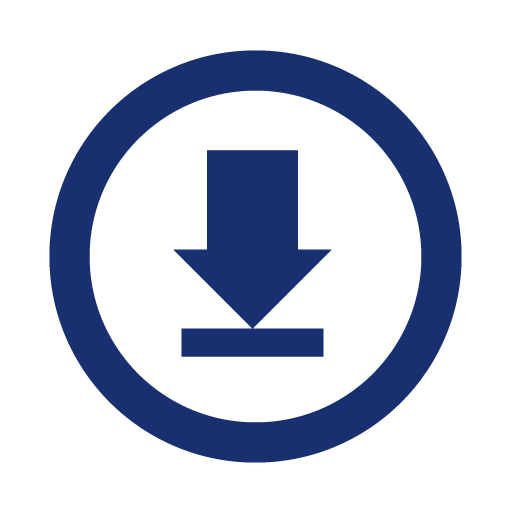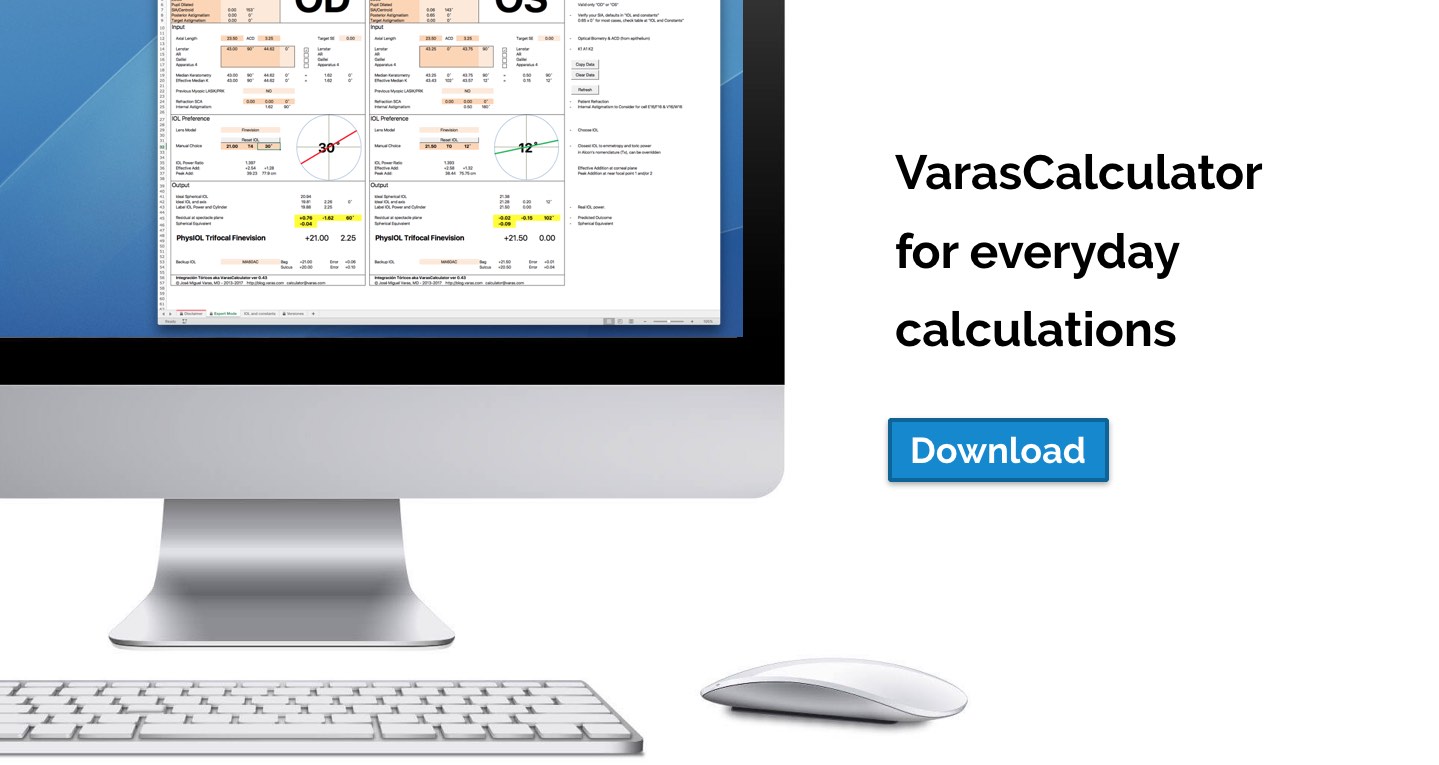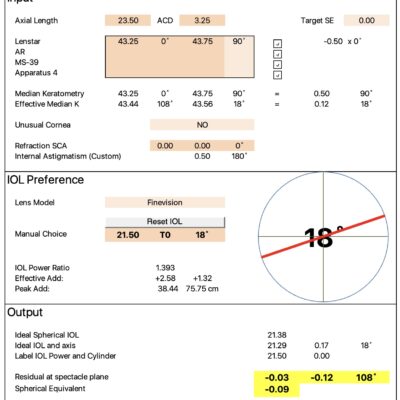Non-Anterior Astigmatism (posterior astigmatism)
To improve toric calculations, it is important to consider not only one anterior keratometry measurement and the astigmatism induced by the incision (SIA) it is also important to consider non-anterior astigmatism.
To address the amount of non-anterior astigmatism (posterior astigmatism), the surgeon can choose one additional vector among several sources:
- Using an instrument capable of finding the posterior power of the cornea.
- Using the vectorial difference between refraction and median keratometry (when refraction is reliable)
- Using a fixed number for most cases based on studies published (-0.50 x 90˚, I personally use -0.65 x 90˚)
- A variable number as a function derived from the amount of anterior astigmatism (data from a large database)
Non-anterior astigmatism could be equated either to the result of the difference between Total Corneal Power minus anterior astigmatism or anterior astigmatism plus posterior astigmatism and other unknown factors such as IOL tilt.
Patient Derived Non-Anterior Astigmatism
For selected patients where keratometry and refraction is very reliable, it is also possible to consider using a Patient Derived Non-Anterior Astigmatism Vector (PDNASV -a ridiculous acronym by the way-). This section can calculate this individual factor to introduce as a personal vector instead of a tomography-derived vector or a fixed fudge-factor (such as -0.50 x 90˚ or -0.65 x 90˚)
Median Keratometry
To address the fact that different keratometric sources and devices will render different keratometric readings we considered using up to four sources from different trusted devices (for example I use Lenstar, a Nidek AR, a Galilei G4, Optikon and/or Atlas). In such a way if we choose the median value of each vector we can use the power of the median function to discard outliers in the information to obtain a more robust median keratometry.
The aim of this new approach is to try to decrease the dispersion of the calculation and predictive power of the IOL selected.
We know AL (axial length) and ACD (anterior chamber depth) measurements with optical instruments (IOLMaster and maybe even better ACD readings on the Lenstar, and other new optical biometers) are very reliable. The major caveat to improve IOL prediction, besides ELP prediction (which is a formula/method dependent) is the most variable measurement: keratometry.
ELP engine
This calculator uses a vergence formula based on the Haigis formula engine to predict IOL power. Toric calculations are the author’s approach to cylinder power predictions considering at least 3 astigmatic vectors and ELP to calculate the toricity of the IOL.
Features
In this approach we propose IOL calculation using up to four vectors:
- Median Anterior Corneal Keratometry
- Posterior or Internal Astigmatism Component
- SIA / Surgically Induced Astigmatism
- A fourth slot for an extra vector such as Desired PostOp Astigmatism or in the future to address IOL tilt
What’s new in version 40:
- Ability to choose up to four keratometry sources the on/off switch on-the-fly
- Effective Keratometry (the recalculated TOTAL corneal power to make all calculations)
- Toric and Add Power Ratio (useful to
- Effective Add (for bifocals and trifocals)
- Peak Add Distance (for bifocals and trifocals)
- Internal Astigmatism Calculator
- Simultaneous Calculations for both eyes or same eye with different parameters
Download Integración Tóricos
aka VarasCalculator
Download VarasCalculator
Instructions and Videos
Headphones and Fullscreen are strongly recomended for inmersive experience.
Comments by some colleagues
I enjoyed your toric tools. I especially like the toric axis iPhone app. Nice job.
I love your idea and your app. I would like to spread your great app among the young ophthalmologists. They should know that also in Ecuador state of the art ophthalmology is practiced.
Congratulations on creating such an elegant and remarkable app!
Your app is really great!
Simple, elegant, makes life much easier. Makes expensive marking system as unnecessary.



